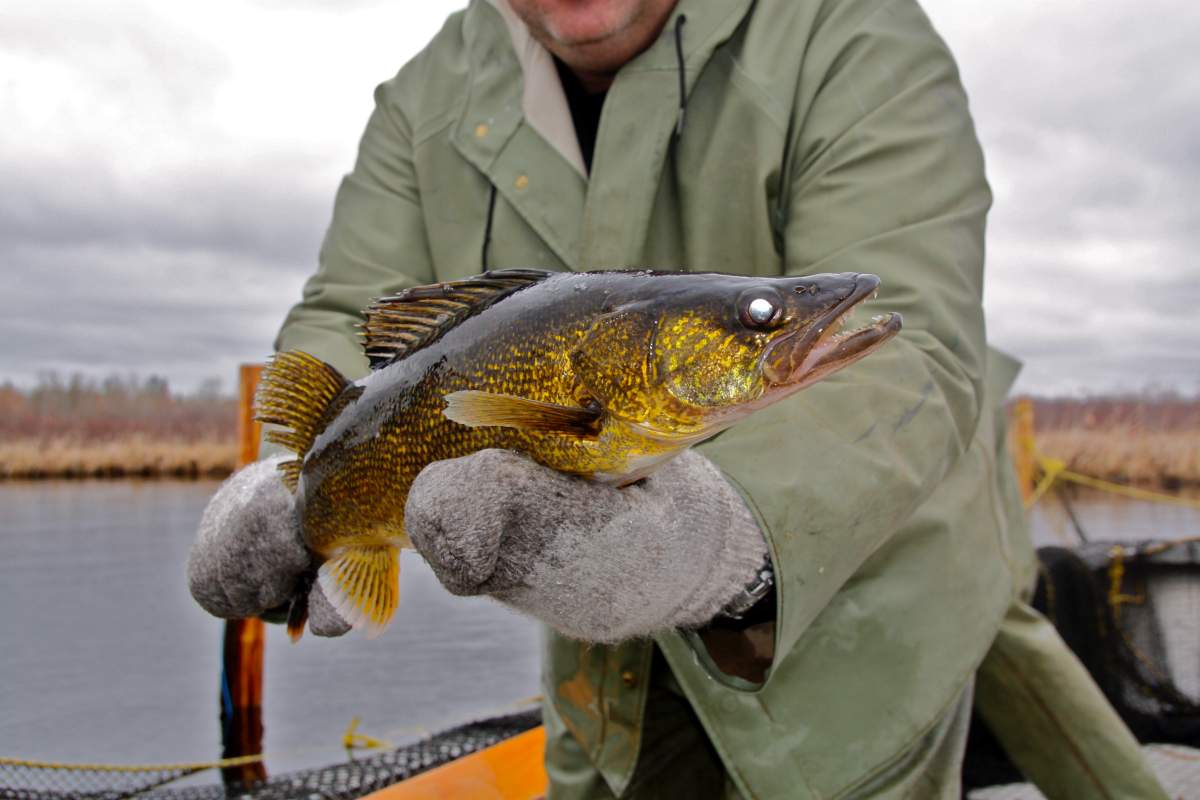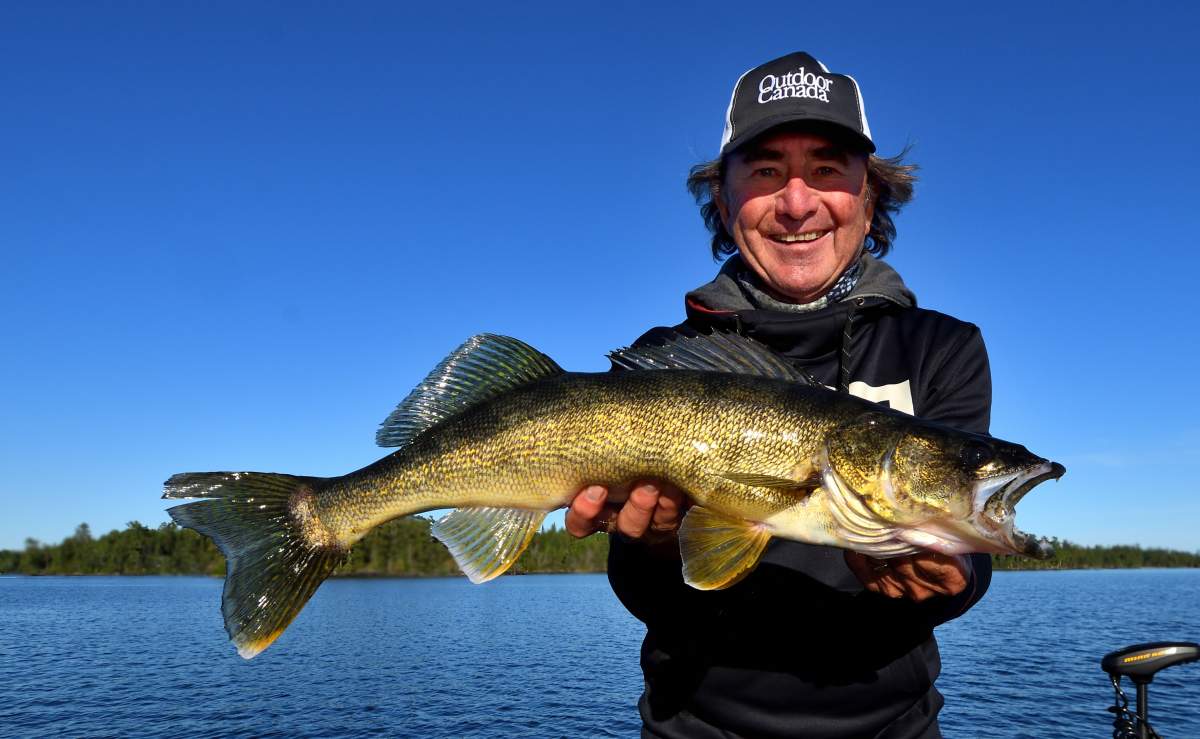Manitoba is proposing to make changes to fishing regulations, which would include banning anglers from keeping trophy walleye in the province.

The province-wide regulation means anglers could no longer keep walleye over 70 cm in length, and instead could only keep one walleye over 55 cm in length and not exceeding 70 cm. Currently, anglers can keep one walleye over 55 cm, which can include one over 70 cm, depending on the zone and body of water.
The proposed change in possession of trophy walleye is part of Manitoba’s angling strategy, a provincial initiative to respond to growing popularity in fishing, while protecting and managing fish populations.
The move being welcomed by many Manitoba anglers.
“I personally think that’s a great thing, we need to let the big fish go, that way they can reproduce and make more walleye,” said Todd Longley, who owns and operates City Cats guide service, targeting channel catfish and walleye on the Red River and on Lake Winnipeg.
“Only up to three per cent of the walleye population will make it to be adults and reproduce. So the more big fish released, the better. I’m all for it.”
For anglers who want to mount trophy fish, Longley says there are replicas that do the trick.
“They make amazing replicas now that are as good as the real thing, if not better, and they last longer,” Longley said. “So get photos of your fish, make sure you get the length and everything, and get a replica made.”
For anglers looking to keep fish to eat, Longley says you wouldn’t want big ones on your plate, anyway.
“A fish that big doesn’t taste good, the meat is kind of spongey,” he said. “You don’t really want to eat anything over 17 or 18 inches anyways.”

Get daily National news
The proposed changes would only allow anglers to keep four walleye each day. You can currently keep six walleye under a regular licence, and four under a conservation licence. The province looking to make these changes in an effort to create a more sustainable walleye population.
“Walleye over 70 cm are almost always female and have high reproductive potential,” a provincial spokesperson said in an email. “Releasing large walleye to be caught again also creates the added excitement and anticipation of catching a fish of a lifetime.”
Gord Pyzer, a professional angler based out of Kenora, Ontario, also applauds the modified possession limits.
“What they’ve done is superb, and I understand the reason. It’s excellent,” Pyzer told Global News.
“They’re trying to protect those large breeding-size fish. They are the geese that lay the golden eggs. A 70 cm walleye is laying half a million eggs. If you can protect those fish and have them coming in, they are worth their weight in gold.”
Pyzer says it’s a progressive step to preserving Manitoba’s walleye population and he hopes to see even further action taken in the future, as there’s room to reduce the limit even more.
“A female walleye matures and spawns at 16 inches (40 cm),” Pyzer said. “So to be totally honest, I wish it was actually one may exceed 40 cm, and to be honest, the best would be none over 40 cm.”
He says targeting trophy-sized fish has led to damaging fish populations, something he’s also seen on Lake of the Woods in Ontario.
“Unfortunately, it becomes a target every time you go out, and people say ‘well I got my one over’. That isn’t what it was designed to do and the intent then gets lost,” he said, adding that the same applies to when anglers constantly target catching and keeping their daily limit.
“What we’re always trying to work toward is have our cake and eat it too, and we can actually do it with what we’re seeing here in these new regulations, what they’re doing is emphasizing the harvest toward smaller fish, and those are expendable members of the population.”
Pyzer also says fish populations in certain areas have seen higher pressure over the past year, as more people have been staying closer to home and finding activities to do outdoors amid the pandemic.
Species-specific year round fishing
Manitoba is also proposing year-round fishing for all species, with the exception of walleye, lake trout, and sturgeon during their spawning season. All other species, including smallmouth bass, northern pike, and channel catfish, would be open year-round.
Pyzer says ongoing studies from Ontario and the U.S. have shown that fishing for bass during their nesting season, can be harmful.
“A female walleye comes in and lays up to half a million to three-quarters of a million eggs. A bass comes in and it lays maybe two-thousand,” he explained. “The difference is, the male stays and it protects those 2,000. But if you leave the season open and allow people to kill them, you get zero reproduction.”
“There are no redeeming qualities fishing for bass while they are nesting. If you do, you will end up with the worst population.”
Manitoba is also proposing to move to a single licence type. Currently, Manitobans have the option of purchasing a regular fishing licence or a conservation licence, which has lower possession limits. The proposed changes would align with conservation limits, including four walleye, four northern pike, one lake trout etc.
The proposed changes would come into effect on April 1, 2023, pending amendments to both provincial and federal fisheries regulations. That process can take 18 months to two years to approve, according to a provincial spokesperson. The province is also asking Manitobans to weigh in on the proposed changes, through EngageMB.










Comments